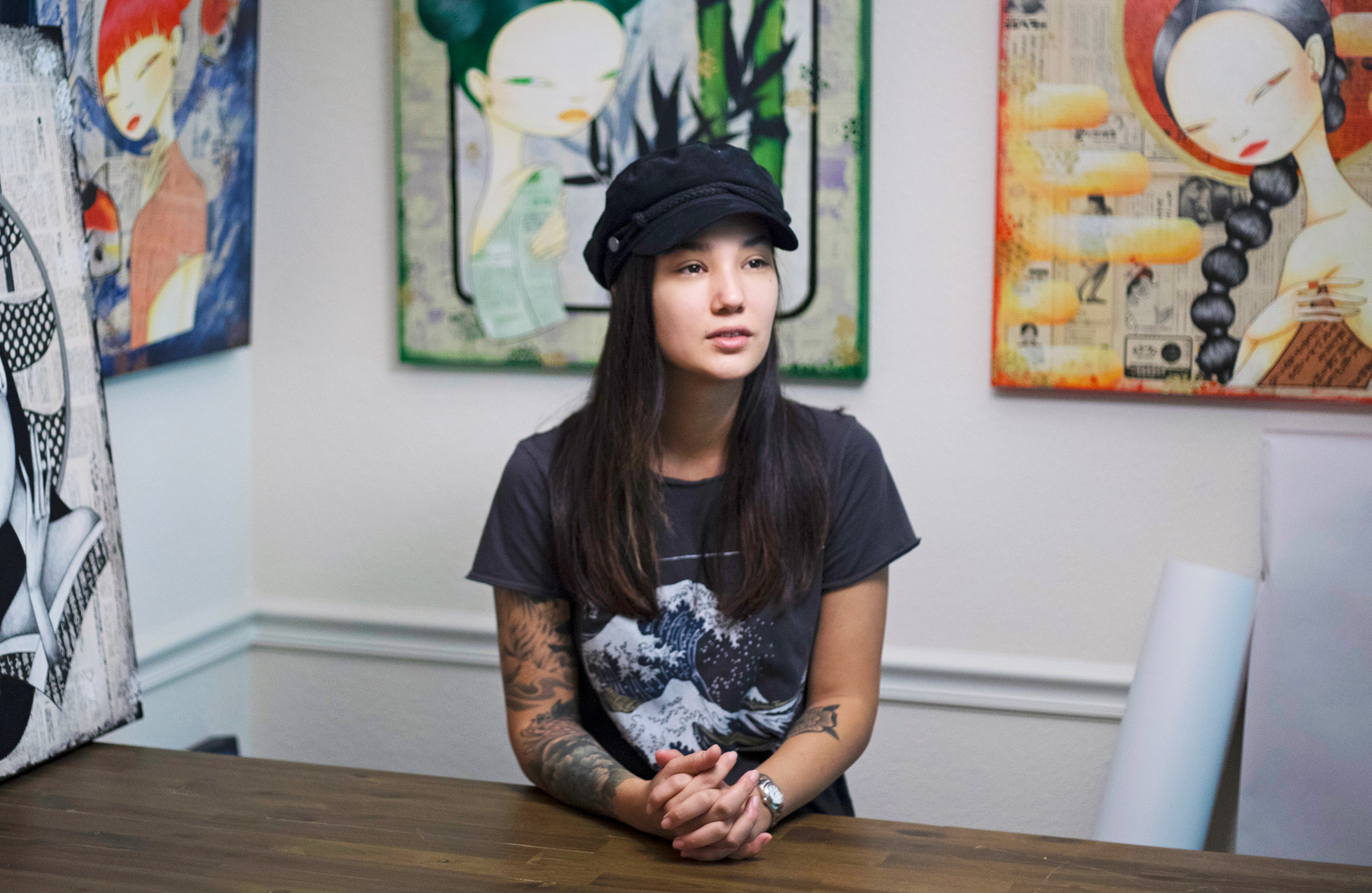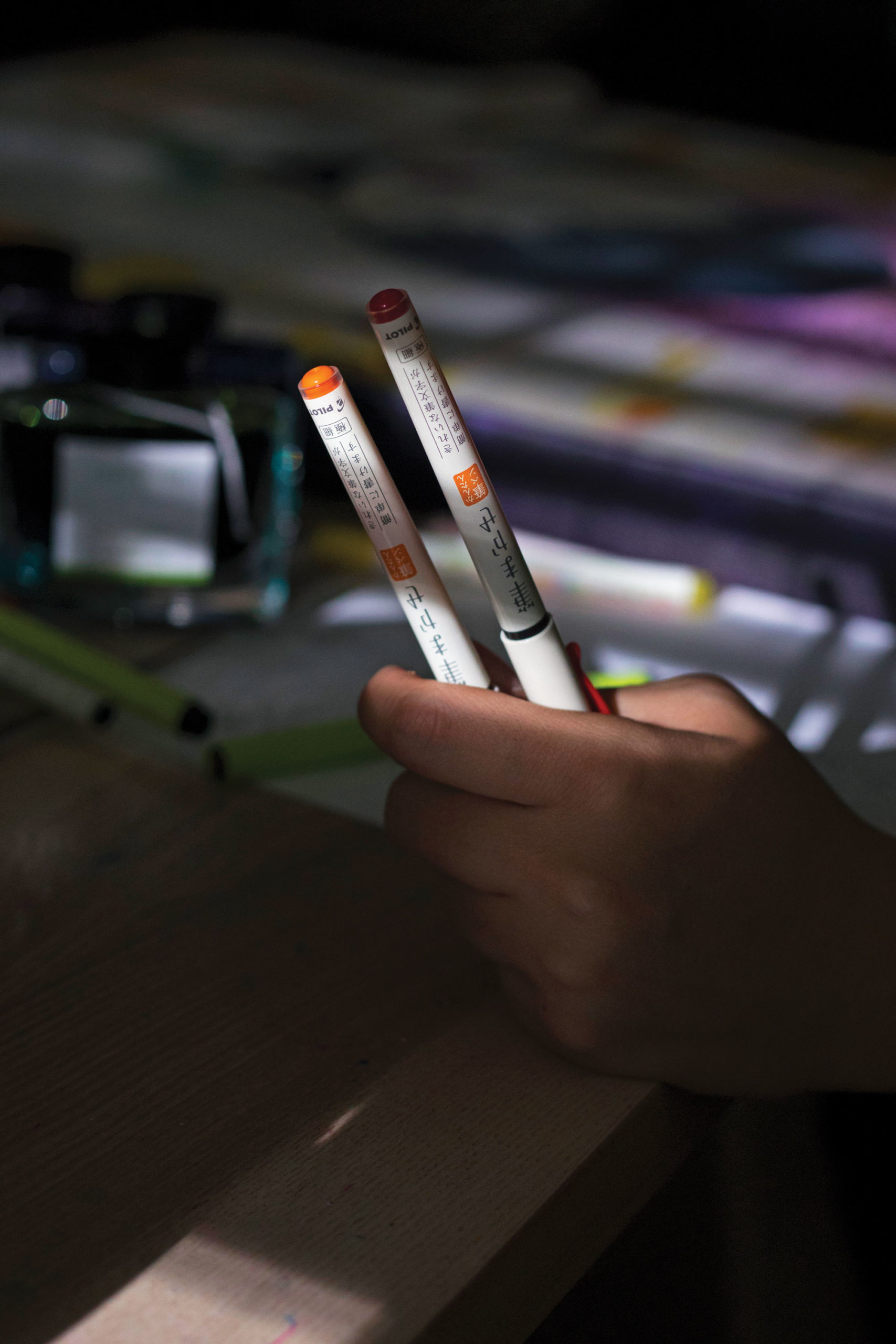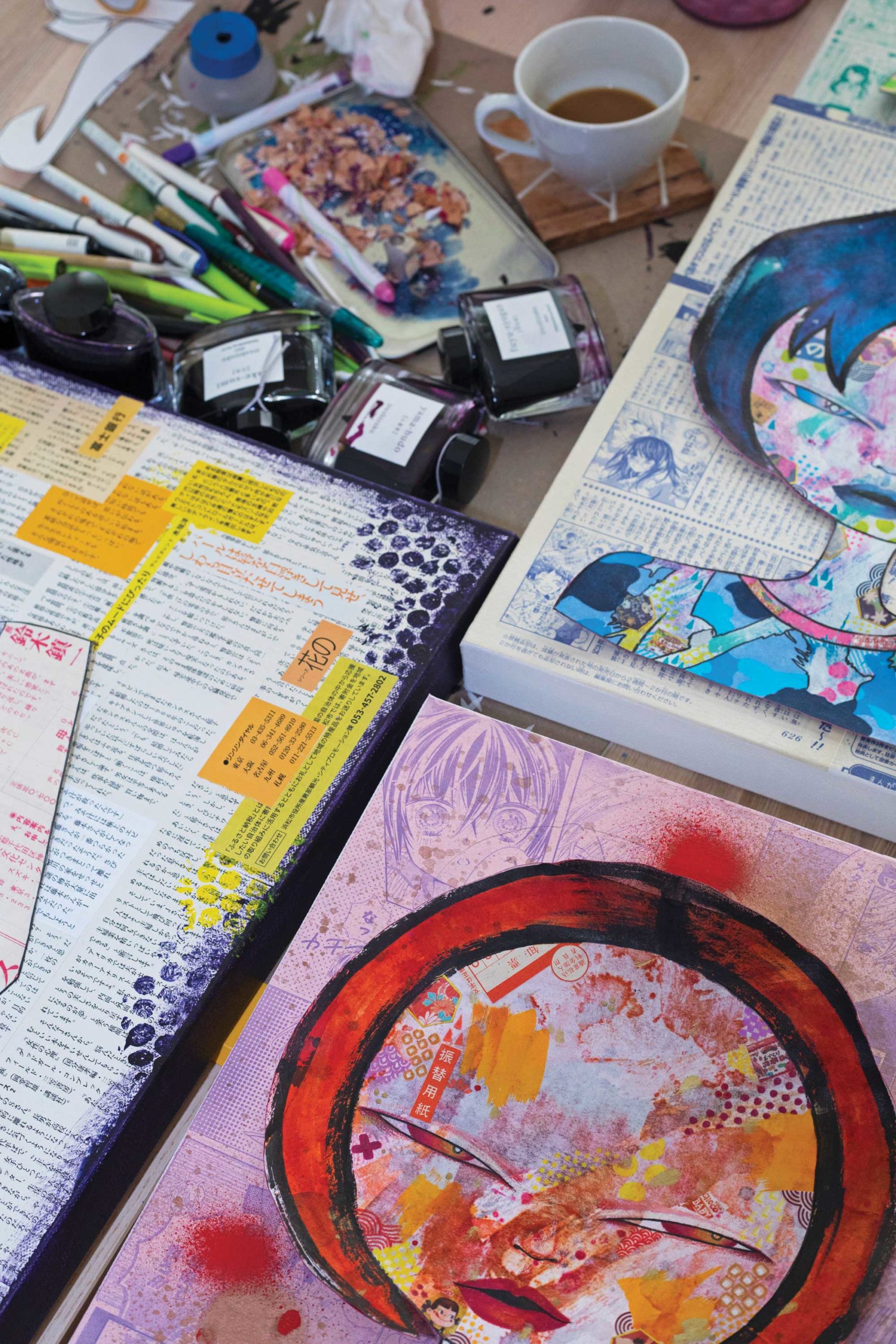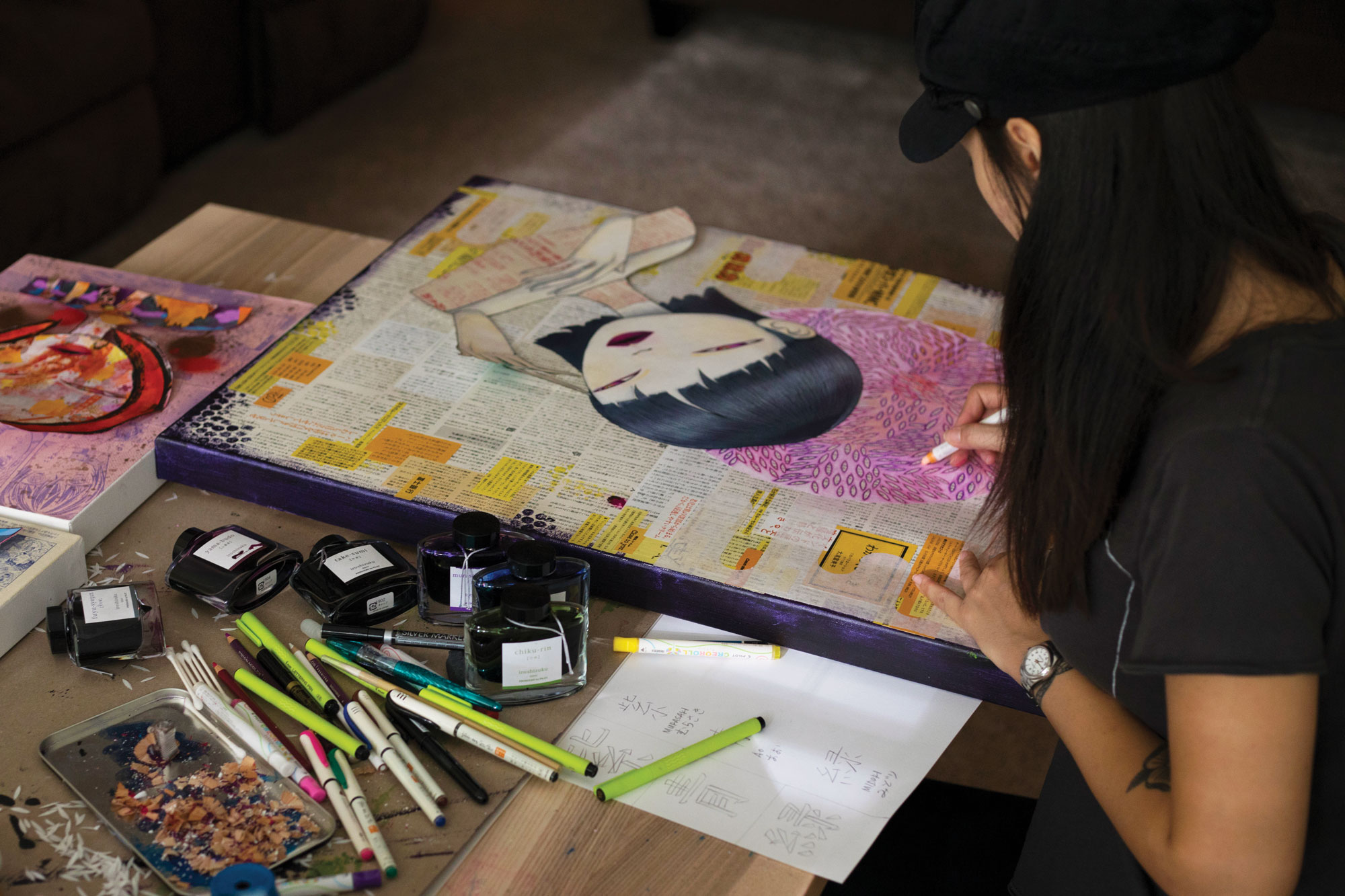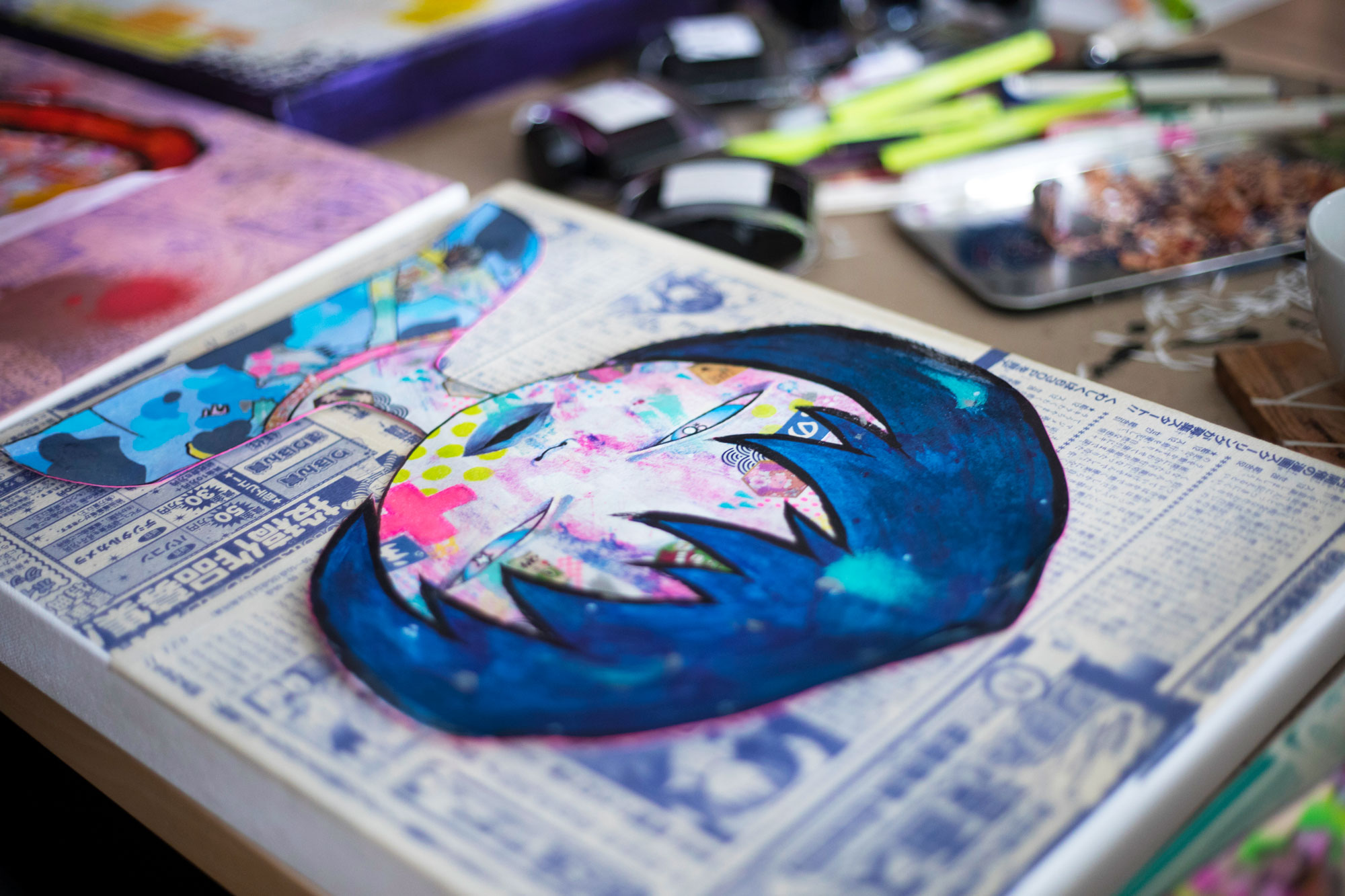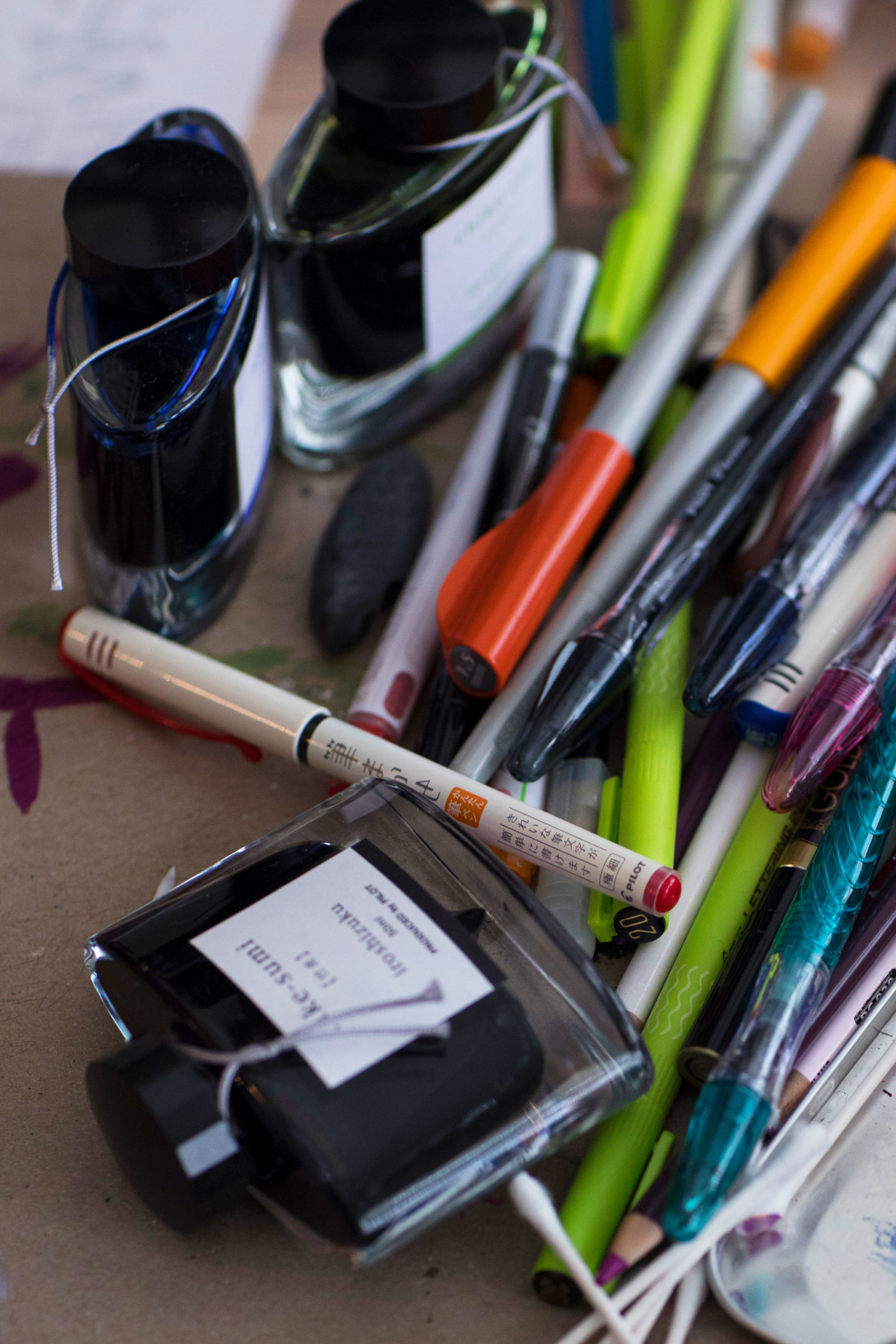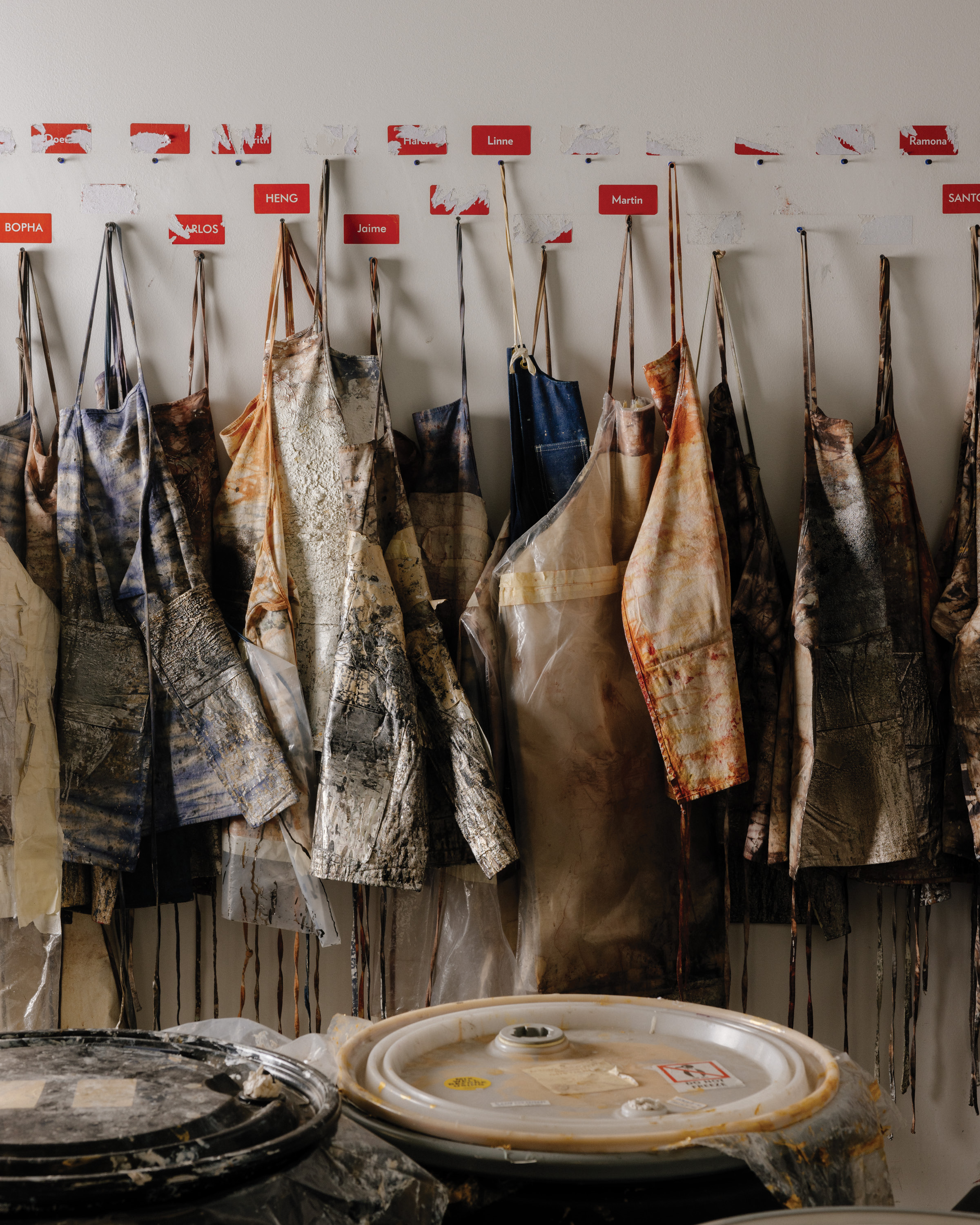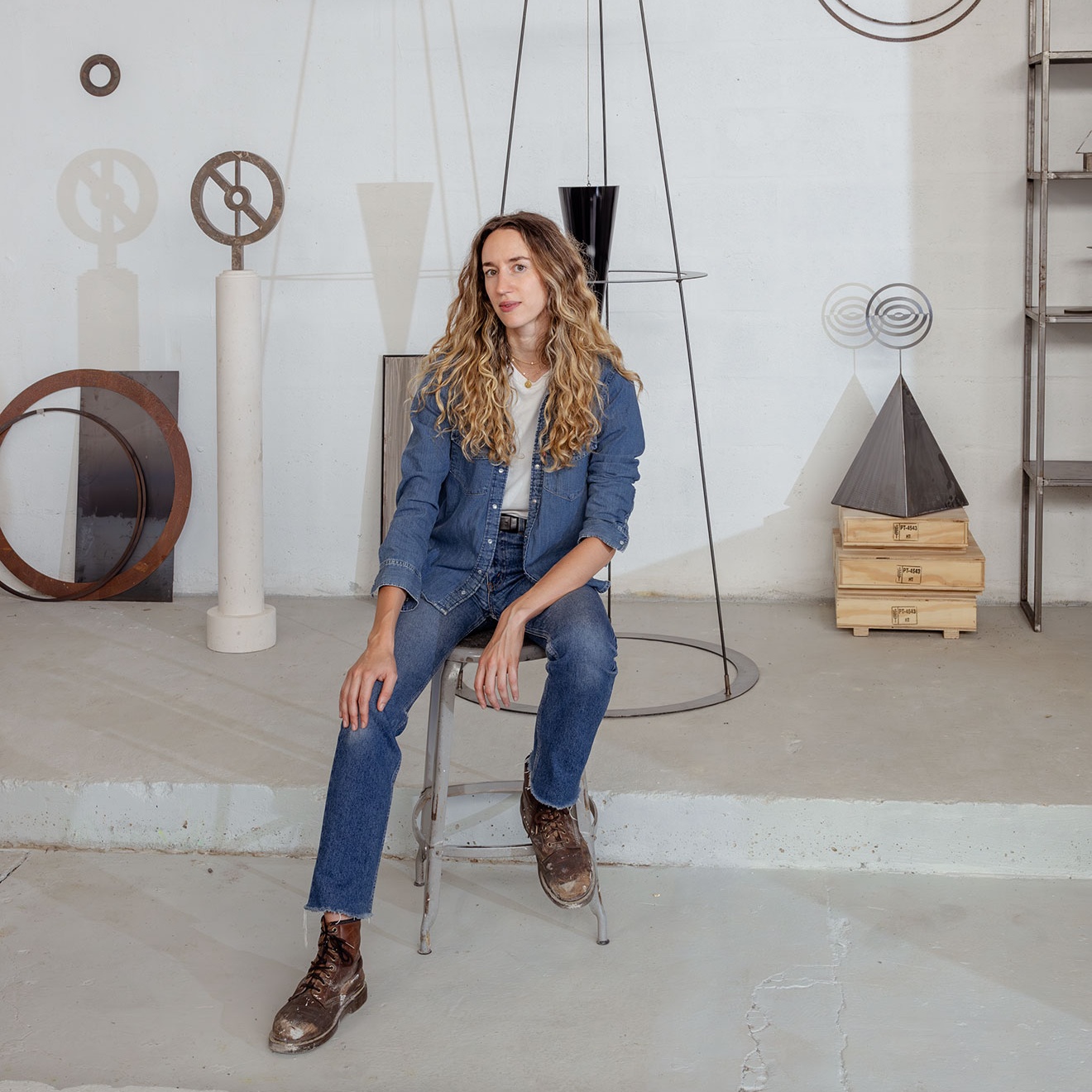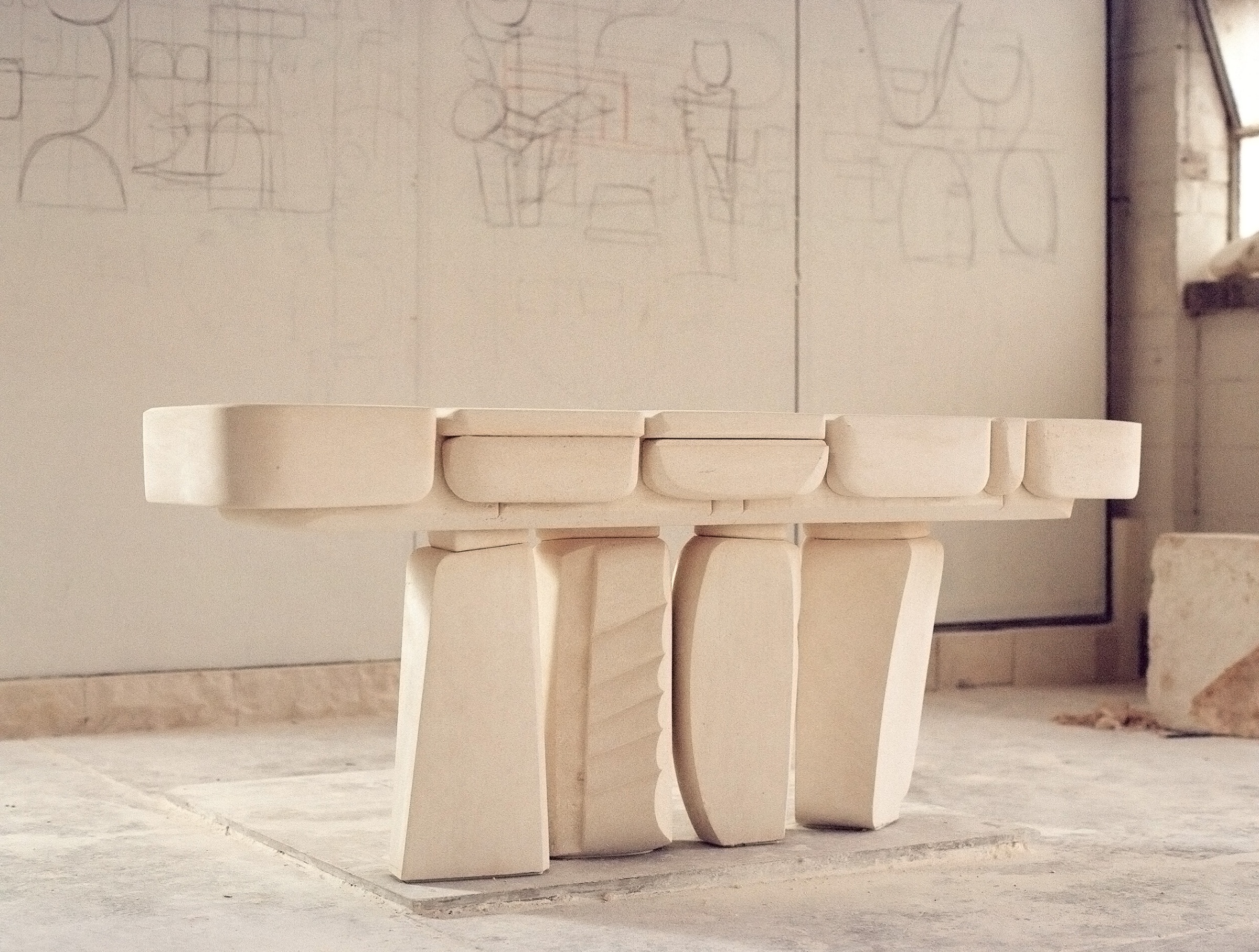The human condition, identity, individuality—these are the themes of Elena Øhlander’s work. “Within the framework of my Eurasian-American feminine identity I seek to preserve my heritage and cultures,” she says.
In the traditional Japanese art form sumi-e, the ensō is a circle of uninhibited brushstrokes. It has many meanings. Zen Buddhist calligraphists believe how an artist creates the ensō, whether it’s closed or open, thick or thin, a continuous line or something broken and halting, reveals hidden truths about its creator.
For Elena, an artist based in Jacksonville, it has personal significance, as she’s inspired by sumi-e and the idea of the ensō and creates many of her works with the Ensō Collection of artful writing instruments by Pilot Pen. Her work is surprising, colorful, multilayered—full of meaning. The narratives she weaves seem to leap off the canvas like the koi of her Koi no Takinobori. “When I sit down to make a piece of work, I don’t necessarily have a clear vision in mind. I start with the girl herself. I sketch her out before I line her,” she says. “That process, starting with the girl, her expression, her gesture, really informs the mood of the rest of the piece. I’m going off of how I’m personally feeling and my own life experiences either from the past that inform who I am today or just in general, very recent things that unfold and can be unexpected.”
- Elena picked up the Iroshizuku fountain pen ink set as a starting point for her Koi no Takinobori series, crafting multi-faceted characters to represent each hue of ink, from Bamboo Forest to Morning Glory. “They all already evoke some kind of mood or experience in the name of the color itself. I just allowed those names to inform each piece.” In so doing, she gave the products their own story, layered in brushstrokes and splatters, vintage Japanese advertisements, and the pages of comic books. Photo by Toni Smailagic
- Elena started exploring her heritage and experimenting with art as a teenager, but didn’t think she could make a living that way. Years later, with a degree in photography, a career in the restaurant industry, and a beautiful daughter, she couldn’t resist the call of art anymore, and she made her dream come true. What happened was extraordinary, a melding of feminism and traditional Japanese culture, modern tools, and ancient techniques. Photo by Toni Smailagic
Gishin Anki, for example, is a collage of a beautiful woman looking over her shoulder, bent over as if to shield herself from prying eyes. She is wrapped in nothing but a sheet of words and behind her a wall of advertisements—all aimed at ensuring she remains beautiful and feminine—seems to close in. Around her head, a vibrant orange glow, rimmed in an ensō shape, burns like a setting sun. The piece’s name translates to “jumping at shadows,” and you can imagine why such a woman might feel on edge.
The series, titled Kyouka Suigetsu, fits comfortably beside her other works, like the Kintsugi Ramen girls, whimsical characters wrought in ink and acrylic on birchwood, silently speaking both to the current state of femininity—as something to be consumed like a snack—and to the beauty of their flaws, represented in the kintsugi practice of painting repaired pottery with veins of gold.
- Elena’s multilayered works come to life with Pilot Pen’s unique Ensō Collection—fountain pens, calligraphy sets, brush pens, and more—aimed at artists of all levels. Elena in particular loves her extra fine tip Brush Pens and Creoroll gel pastels. Using the Creorolls, her creations are vibrant yet opaque, with a soft, velvet-like texture. Photo by Toni Smailagic
- Photo by Toni Smailagic
Although Elena first started exploring her heritage and experimenting with art as a teenager, she never believed she could make a living that way. Years later, with a degree in photography, a career in the restaurant industry, and a beautiful daughter, she couldn’t resist the call of art any longer. She quit her day job and picked up a pen. “I knew if I had the time to dedicate just to making art, something may happen.”
What happened was extraordinary, a melding of feminism and traditional Japanese culture, modern tools, and ancient techniques. She drew her vision from the past and the present, like ink from a well. “My main inspiration really is that fact that my daughter is half-Japanese. I really connected to it through her and her eyes as a 9-year-old girl. And now I get to teach her about Japanese culture through my work.”
- Pilot Pen is the oldest and largest manufacturer of writing instruments in Japan, with its US headquarters in Jacksonville, Florida, where Elena also lives and works. Photo by Toni Smailagic
- Inspired by a 100-year heritage of craftsmanship and Japanese culture, the Ensō Collection by Pilot Pen is uniquely suited for Elena’s aesthetic. Photo by Toni Smailagic
This article originally appeared in the Fall/Winter 2019 issue of Sixtysix with the headline “Elena Øhlander.” Subscribe today.
PRODUCTION CREDITS
Produced by Studio Sixtysix
Words by Mikenna Pierotti
Photos by Toni Smailagic
Studio Sixtysix is the in-house creative agency to Sixtysix magazine. Studio Sixtysix stories are conceived, produced, and edited by Studio Sixtysix.
